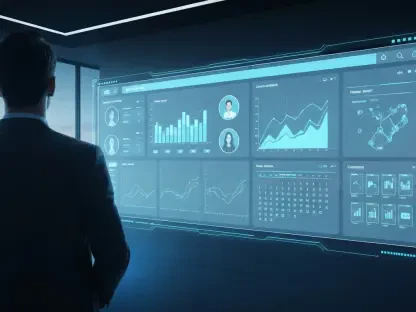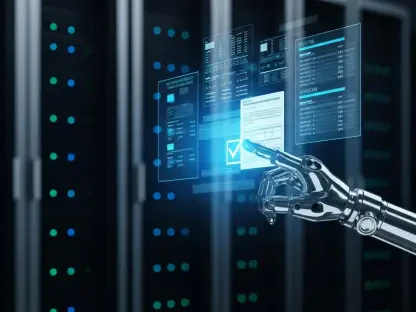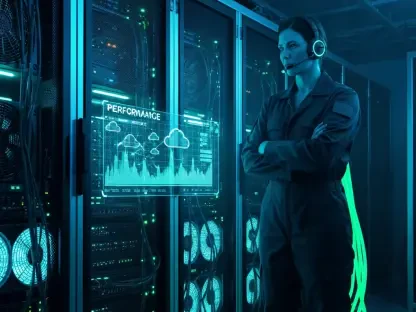The traditional software development landscape is witnessing a revolutionary shift with the introduction of AI-powered methodologies like Silicon Shoring, introduced by Reply, a global systems integrator and technology consulting firm. This new delivery model leverages AI to enhance and automate the Software Development Life Cycle (SDLC), offering a glimpse into the future of efficient and intelligent software production. Silicon Shoring suggests a paradigm shift wherein the processes of software development become increasingly flexible, intelligent, and automated. By embedding Generative AI agents throughout the SDLC, the initiative combines AI innovation with human expertise to deliver scalable, high-quality software rapidly. As companies across the globe face mounting pressure to deliver products faster and with fewer resources, the implementation of AI into software development cycles could possibly redefine industry standards and practices.
An Innovative Approach to Software Development
Silicon Shoring transforms the software development process by integrating AI at various stages, including requirements gathering, code generation, testing, deployment, operations, and monitoring. By doing so, it significantly streamlines processes that were traditionally mired in manual, low-value tasks. The approach effectively enhances quality assurance and automates deployment workflows, delivering measurable business value in the form of accelerated SDLCs and improved software quality. The AI systems ensure that the code is maintained in compliance with best practices from the onset, bolstered by AI-based testing and rigorous monitoring. This proactive stance helps identify and resolve potential issues early, effectively mitigating downtime. AI-generated insights contribute to superior architecture decisions, accurate estimations, and resource planning, ensuring more consistent and clearer specifications at the beginning of the development cycle.
The Silicon Shoring model addresses different enterprise requirements through two main engagement models: the In House and the Managed models. The In House model allows organizations to integrate Reply’s agentic AI system within their own environments. This integration provides enhanced control, security, and alignment with internal governance and compliance standards. Supported by a robust change management strategy, the model ensures scalable industrialization, accelerating in-house IT capabilities and equipping teams with AI-enhanced skills for long-term organizational resilience. On the other hand, the Managed Silicon Shoring model offers a fully managed, AI-powered software development environment operated by Reply. This alternative counters the inefficiencies of traditional offshoring by eliminating challenges such as time zone discrepancies and communication barriers. It guarantees local accountability and swift, AI-enhanced delivery, thus meeting client needs efficiently.
Silicon Reply: The Heart of AI-Driven Transformation
Central to the transformative delivery model of Silicon Shoring is Silicon Reply, a multi-agent AI system that seamlessly orchestrates AI-driven automation across the SDLC. This system metamorphoses ordinary organizations into autonomous software factories where AI agents work in tandem with human teams. Each AI agent assumes a specific, value-generating task, ranging from requirement extraction, code writing, automated testing, release orchestration, to identifying production anomalies. These agents function within a secure, governable ecosystem tailored for enterprise adoption. The ecosystem is enriched with features like LLM observability, performance evaluation, dataset management, and model gateway orchestration. This structured integration of AI allows for efficient operation while maintaining the necessary oversight for complex development processes.
Silicon Shoring’s monitoring capabilities use a data-driven approach to enhance software delivery. By utilizing AI-enforced structures, it automatically tracks and measures various vital metrics. These include flow metrics, such as cycle time and throughput, DORA metrics addressing deployment frequency and failure recovery, and quality metrics evaluating code robustness and test coverage. The previous dependency on manual data collection or siloed tools is replaced by Silicon Shoring’s proactive and systematic approach, ensuring comprehensive and efficient data management. Additionally, the introduction of new AI-specific metrics provides insights into operational costs and the effectiveness of adopted AI systems. These metrics include LLM token consumption, SDLC tool usage, active user engagement, and ROI indicators, offering transparent insights into efficiency, application, and adoption.
Comprehensive Governance and Strategic Adaptation
Silicon Shoring includes the Governance Dashboard as a vital component for managing the development lifecycle effectively. This dashboard provides a comprehensive visualization of progress, beginning with business requirements and concluding with the final release. It tracks stories, epics, assigned tasks, calendars, and defects, offering an end-to-end view of the development cycle. Built-in alerts promptly notify users of any critical risks, such as potential delays or high-risk deployments. Furthermore, the dashboard provides detailed summaries and timelines to align both business and technical teams with delivery objectives, ensuring consistent communication and execution throughout the process.
Tatiana Rizzante, the CEO of Reply, accentuates Silicon Shoring’s distinctive approach to redefining software development by leveraging a multi-agent AI architecture. This model allows enhanced scalability while maintaining organizational control, reducing complexity, and ensuring continuous compliance. Whether Silicon Shoring is deployed in-house or as a managed service, it adapts seamlessly to evolving development needs, presenting a flexible model for modern engineering practices. Enterprises across various sectors are already adopting this model for greenfield projects, application maintenance, and legacy transformations, reflecting the adaptability and efficiency of the approach.
Future Prospects and Strategic Considerations
Silicon Shoring revolutionizes software development by seamlessly incorporating AI at key stages such as requirements gathering, code creation, testing, deployment, operations, and monitoring. This integration streamlines processes traditionally bogged down by manual tasks, improving efficiency by eliminating repetitive work. It boosts quality assurance, automates deployment workflows, and enhances software quality, thus creating measurable business value with faster SDLCs. The AI systems uphold coding best practices from the outset, supported by advanced AI testing and monitoring. This proactive methodology aids in early issue detection, significantly reducing downtime. Furthermore, AI-generated insights lead to better architectural decisions and accurate planning, providing clearer specifications at the development cycle’s start. It employs two main approaches: In House for internal AI integration, enhancing scalability and resilience; and Managed, offering AI-powered development by Reply, circumventing offshoring issues for efficient, accountable, and rapid delivery that caters to client needs effectively.









